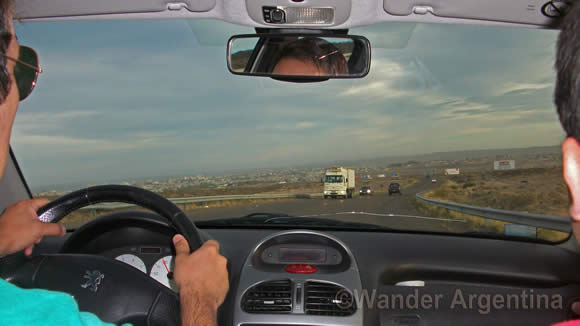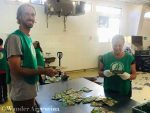The study abroad dream is to pop into a new culture, make local friends and travel the country before gliding back home brimming with new experiences and a fresh lease on life. Ideally, the culture shock phase should be skipped, allowing maximum time for the jumping in and having fun part.
Like most dreams, this can be hard to achieve, and students in Buenos Aires might wonder why after six months they are still surrounded by other foreigners, frequenting expat bars and struggling to conjugate their Spanish verbs.
Once students step out of their comfort zone and start really experiencing Argentina, they may find that dream becomes much more tangible.
1. Make local friends and avoid people from your country
While it is tempting to hang out with fellow foreigners, stepping out of that bubble and making local friends is one of the best things you can do. It’ll improve your Spanish and you’ll meet new people and learn more about the culture.
With that said, there is no need to completely alienate yourself from your countrymen. One or two foreign friends is fine, but going out with large groups of obnoxiously loud expats is counterproductive – there is no worse way to blend in than by hanging out in such packs, and no sane local will want to approach a group of people who are apparently uninterested in local culture.
2. Become a quasi-local
If you can’t seem to escape hanging out with foreigners, a change of scenery may be in order. That means avoiding going to American sports bars and Irish pubs filled with expats. Bypass touristy areas such as Plaza Serrano in Palermo Soho if in Buenos Aires, and opt for a local bar in a less touristy part of San Telmo or Almagro.
Now that you aren’t clinging to other foreigners, you can focus on acclimating to the Argentine culture
Learn and participate in local traditions. Buy a mate and have a local teach you how to properly serve it. If you want to emulate a true Argentine, wait to eat dinner until the dining hour actually begins, – 9 p.m. at the absolute earliest – and stop trying to find imported products or food that you are used to. The locals manage to survive without peanut butter and marmite, believe it or not, you can too.
One of the easiest ways to feel at home is to become a familiar face in your neighborhood. Chat with the greengrocer as you struggle to remember the word for celery, say ‘hi’ to your neighbors and doorman, find a cozy café to do homework and inevitably people will begin to recognize you. Neighborhood friends, people you can wave to on your walk to the bus, make life more pleasant and help distiguish you from a simple tourist passing through.
3. Travel as much as Possible
A study abroad experience in Argentina is not complete without traveling outside of Capital Federal. Argentina is packed full of natural wonders, a trip to Iguazu Falls, one of the seven natural wonders of the world in Misiones is almost obligatory. Uruguay is right across the river and easily accessible for a weekend trip, and Mendoza is a (relatively) short 14-hour ride across the country to the mountains.
If you can’t afford one long trip around the continent, take smaller trips on the weekends and just get out to see different places. Tour the Delta in Tigre, which is just less than an hour away, or head out to Lujan and visit the zoo. And if you’ve already blown the budget on traveling, remember that couchsurfing, hostels and camping are great ways to meet people and travel without spending all your savings. The friendly and adventurous could also save money on the road by hitchhiking.
4. Document your stay
It doesn’t matter if you consider yourself a writer or photographer, one of the best things you can do is document your time in Argentina. Diary writing isn’t just for little girls gushing over their crushes. Get the notion out of your head of the cheesy, sentimental diary you write to purge your emotions and keep a journal about what you do, see and people you meet. Add photos, bus tickets and fliers as mementos. Looking back on days you’ve forgotten is a cool way to remember the small, quirky details about your experience and noting down things you find strange at first, will amuse you at the end of the trip when you consider them normal.
If you are really not a writer, try taking as many photos you can, either for just yourself, for a blog or to share on Facebook. While it may seem a hassle to lug your camera around everywhere, you’ll be glad you did in a few months when you want to share your experience.
5. Take advantage of your classes
Yes, unfortunately studying abroad means you’ve got to attend classes at least sometimes. If your ultimate goal is to learn the language, take as many classes in Spanish as you can. The key to success is to participate. Being overly shy or the strong silent type won’t benefit you if you want to show off your language skills later — communicate in Spanish as much as you can while you have a native teacher. Real interaction will improve your Argentine Castellano much more than it will by just taking a grammar class and sliding by.
If there is something better going on – meaning cultural experiences, not hangover days – don’t feel too bad about skipping class. It’s always better to ask for forgiveness than permission, and your real progress with the language matters more than perfect attendance.
6. Explore the city
For the study abroad student staying an extended length of time, once a routine is established, some feel reluctant to stray from it.
When this happens, it is time to switch up your schedule and explore the city. Don’t save your activities for the weekend and instead hit up a park or museum before your afternoon class, or go with some friends to a festival or city tour after class. Or just take long walks around your neighborhood and you may be surprised at what you discover.
For the organized explorer, making a list of things to do before you go home can help you stick to your goals. Equally, embracing the ‘live for today’ Argentine spirit to enjoy spontanous activities , can be just as valuable.
— by Rachel Aretakis
Argentina Study Abroad ‘Must-See’ Checklist:
– around the country:
• Day trip to Tigre
• Iguazu Falls
• Mendoza
• Patagonia
• Uruguay
• Horse Riding at an Estancia such as one in San Antonio de Areco
– in Buenos Aires:
• La Bomba de Tiempo
• MALBA
• Recoleta Cemetery
• Museo de Bella Artes
• Classic Cafes such as Las Violetas & Tortoni
• La Boca
• Football (Soccer) Game
• San Telmo Street Fair



